Trip ReportA wet and windy afternoon but we failed to be put off and, as usual, the rain stopped just as we set off, to start again in earnest as we returned 90 minutes later! |
| A feature of this wood is the amount of dead timber left on the woodland floor when branches blow off the trees in gales. Today these fallen branches were covered in a variety of richly-coloured brackets of several species of encrusting or resupinate fungi. |
© Bob Ford/Nature Portfolio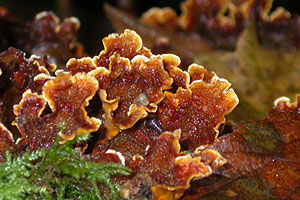
Yellowing Curtain Crust, Stereum subtomentosum |
This species is identified by the rough texture of its upper surface and wavy outline. |
© Bob Ford/Nature Portfolio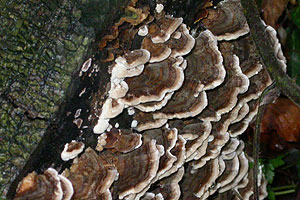
Varicoloured Bracket, Coriolus versicolor |
Varicoloured Bracket is a very common species - we found it back in April at Ashley Chase - but this afternoon we only found a few patches of it. Its multicoloured concentric zones make it fairly easy to recognise. |
© Bob Ford/Nature Portfolio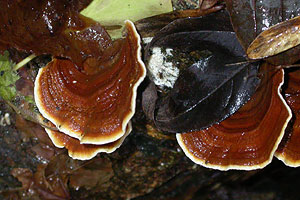
as yet unidentified, possibly Stereum or Coriolus |
This beautiful fungus was everywhere in the woods this afternoon. It was too shiny to be Stereum subtomentosum and too delicate for Coriolus versicolor. I'll add its identification as soon as I can get an expert to confirm what it is. In the meantime, please let me know what you think. |
| Reaching up from the floor through the leaf litter were strange white figures. The Candle Snuff Fungus is one of the commonest species of a group known as flask fungi. |
© Bob Ford/Nature Portfolio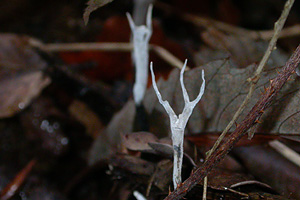
Candle Snuff Fungus, Xylaria hypoxylon |
| The stand of giant Beeches is always a magical place to be and this afternoon in the failing light it was particularly atmospheric. Looking up we could see some very pale mushroom-like fungi growing high up in one of the tallest Beech trees. Through binoculars we could see the delicate form of the Porcelain Fungus. Closer specimens were found on a fallen Beech, and yet more were on the floor where they had been knocked down by a clumsy squirrel. The wet, shiny surface is characteristic but often the species is whiter than these rather grey examples. |
© Bob Ford/Nature Portfolio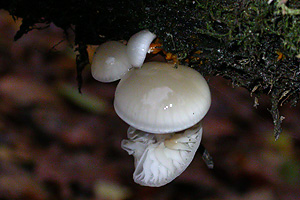
Porcelain Fungus, Oudemansiella mucida |
© Bob Ford/Nature Portfolio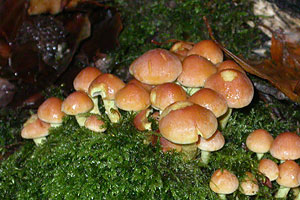
Sulphur Tuft Fungus, Hypholoma fasciculare |
The larger logs here had clumps of fungi sprouting in all directions. The most colourful were these Sulphur Tuft Fungi. The ones on the right are older specimens. |
© Bob Ford/Nature Portfolio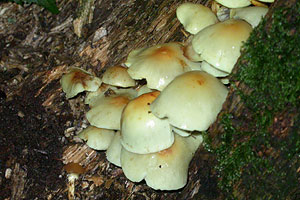
Sulphur Tuft Fungus, Hypholoma fasciculare |
© Bob Ford/Nature Portfolio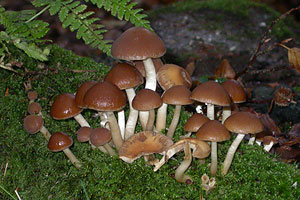
Tufted Brittlestem, Psathyrella hydrophila |
Less colourful but still very attractive were these Tufted Brittlestems, normally known by their latin name Psathyrella. |
| As we walked out of the Beeches and climbed the hill towards the pond the soil became acid and gravelly, conditions that suit the Common Earthball, Scleroderma citrinum. |
© Bob Ford/Nature Portfolio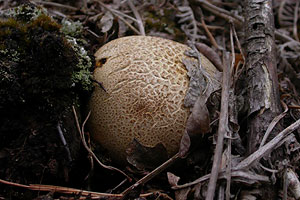
Common Earthball, Scleroderma citrinum |
|
The pond held a few introduced Goldfish, I wonder how many newts will be in there next year?
The shallower parts of the pond were covered in the distinctive Floating Sweet Grass.
Our final leg of the walk back to the car park produced a Nuthatch fly-bay and a few late-flowering plants of Bell Heather. |